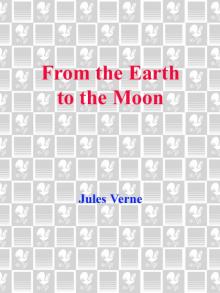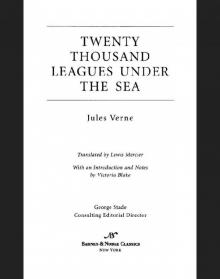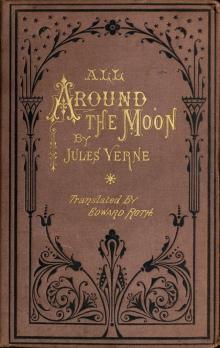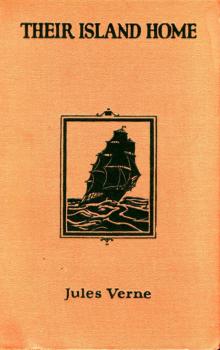- Home
- Jules Verne
From the Earth to the Moon Page 9
From the Earth to the Moon Read online
Page 9
For her share, Russia paid the enormous sum of 368,733 rubles ($272,875). This will be surprising only if one is unfamiliar with the Russians’ strong scientific inclination and the progress they have made in astronomical studies, thanks to their many observatories, the most important one of which cost two million rubles.
France began by laughing at the Americans’ pretensions. The moon served as a pretext for countless tired puns and a score of vaudeville numbers whose bad taste was equaled only by the ignorance they displayed. But just as the French formerly paid after having sung, they now paid after having laughed, and they subscribed the sum of 1,253,932 francs ($231,980). At that price they were entitled to a little merriment.
Austria showed sufficient generosity in the midst of her financial troubles. Her contribution was 216,000 florins ($96,200), which was welcome.
Sweden and Norway contributed 52,000 rixdalers ($54,450). It was a large sum in relation to the population, but would surely have been still larger if the subscription had taken place in Christiania as well as in Stockholm. For one reason or another, the Norwegians do not like to send their money to Sweden.
Prussia showed her approval of the project by sending 250,000 thalers ($173,440). Her observatories readily contributed a sizable sum and were the most ardent in encouraging Barbicane.
Turkey behaved generously, but she had a personal interest in the matter: the moon governs the course of her years and her fast of Ramadan. She could do no less than to give 1,372,640 piasters ($63,300), although she gave it with an eagerness which betrayed a certain pressure from the Ottoman government.
Belgium distinguished herself among the smaller countries by a gift of 513,000 francs ($94,900), or a little more than two cents per inhabitant.
Holland and her colonies put 10,000 florins ($43,500) into the project, asking only that they be given a five-percent discount, since they were paying cash.
Although a little cramped in her territory, Denmark gave 9,000 ducats ($21,720), which proves the Danes’ love of scientific expeditions.
The Germanic Confederation agreed to give 34,385 florins ($13,320). She could not have been asked for more; and anyway, she would not have given it.
Italy, though in straitened circumstances, managed to scrape up 200,000 lire ($37,000) by turning her children’s pockets inside out. If she had had Venetia she would have done better; but she did not have it.
The Papal States felt it their duty to contribute no less than 7,040 scudi ($7,030), and Portugal showed her devotion to science by a donation of 30,000 crusados ($20,940).
As for Mexico, her gift amounted to only $320, and she could scarcely afford even that small sum; an empire that has just been founded is always a little short of cash.
Switzerland’s modest contribution to the American project was 257 francs ($47). It must be said frankly that she did not see the practical side of the operation. It seemed unlikely to her that shooting a shell to the moon would result in the establishment of business relations with it, and she felt it would be imprudent to place any considerable amount of her capital in such a hazardous undertaking. And, after all, she may have been right.
As for Spain, it was impossible for her to get together more than 110 reals ($11). She gave as her excuse that she had her railroads to finish. The truth is that science is not very highly regarded in Spain. She is still a little backward. Furthermore, there were some Spaniards, and they were not among the least educated, who did not have a clear idea of the relation between the mass of the projectile and that of the moon; they were afraid the projectile might alter the moon’s orbit, make it cease to be a satellite and bring it crashing into the earth. Under such circumstances they felt it would be better to do nothing, and, practically speaking, that was what they did.
There was still England. We have already noted the contemptuous hostility with which she greeted Barbicane’s proposal. The twenty-five million people who live in Great Britain have a single soul. They maintained that the Gun Club’s project was contrary to the principle of nonintervention, and they refused to give one farthing to it. On hearing this news, the members of the Gun Club shrugged their shoulders and went on with their great enterprise.
When South America—that is, Peru, Chile, Brazil, Colombia, and the provinces of La Plata—had given $300,000 as her share, the Gun Club had a considerable amount of capital at its disposal: $4,000,000 from the American subscriptions and $1,410,143 from the foreign ones for a total of $5,410,143.
The size of this sum should not be surprising. According to the estimates, the money would be almost completely absorbed by the work of casting and boring, masonry, transporting the workers and providing them with living quarters in an almost uninhabited region, constructing furnaces and buildings, equipping factories, the powder, the projectile, and incidental expenses. During the Civil War there were cannon shots that cost a thousand dollars apiece; Barbicane’s shot, unique in the annals of artillery, could easily cost five thousand times as much.
On October 20 a contract was signed with the Cold Spring factory, near New York City, which had supplied Parrott with his best cast-iron cannons during the war.
It was stipulated in the contract that the management of the company would assume the responsibility of transporting the iron for the casting to Tampa. This operation was to be terminated by October 15 of the following year, and the cannon was to be completed and in good condition, under penalty of an indemnity of a hundred dollars a day, until the next time when the moon would be in the same conditions, that is, in eighteen years and eleven days. The company would also be responsible for hiring and paying the workers, and making all necessary arrangements.
Two copies of this contract were signed by I. Barbicane, president of the Gun Club, and J. Murchison, manager of the Cold Spring Company, after both men had given their approval to its terms.
CHAPTER 13
STONE HILL
AFTER THE Gun Club had decided against Texas, there was no one in the United States, where everyone knows how to read, who did not feel duty-bound to study the geography of Florida. The bookstores had never sold so many copies of Bartram’s Travel in Florida, Roman’s Natural History of East and West Florida, Williams’ The Territory of Florida, and Cleland’s On the Culture of Sugar Cane in East Florida. New editions had to be printed. They were bought up with frenzied haste.
Barbicane had better things to do than read: he wanted to make the site of the cannon and see it with his own eyes. Without wasting a single moment, he turned over to the Cambridge Observatory the funds necessary for the construction of a telescope and negotiated a contract with Breadwill & Co. of Albany for the manufacture of an aluminum projectile. Then he left Baltimore, accompanied by J. T. Maston, Major Elphiston, and Mr. Murchison, manager of the Cold Spring Company.
They reached New Orleans the next day. There they immediately boarded the Tampico, a navy dispatch boat which the government had placed at their disposal. They left the harbor with a full head of steam and the coast of Louisiana soon vanished behind them.
The voyage was not long. Two days after their departure, having covered 480 miles, they sighted the coast of Florida. As they approached it, Barbicane saw that the land was low, flat, and rather barren-looking. After passing several coves rich in oysters and lobsters, the Tampico entered Tampa Bay.
The upper end of this bay is divided into two sections. The Tampico soon steamed into the eastern one. A short time later, the low batteries of Fort Brooke came into view, then the town of Tampa appeared, casually spread out at the far end of the little natural harbor formed by the mouth of the Hillsborough River.
It was there that the Tampico dropped anchor on October 22, at seven o’clock in the evening. The four passengers immediately went ashore.
Barbicane felt his heart pounding when he set foot on Florida soil. He seemed to be testing it, like an architect testing the solidity of a house. J. T. Maston scratched the ground with his hook.
“Gentlemen,” said Barbi
cane, “we have no time to lose. Tomorrow we’ll explore the region on horseback.”
As soon as he had stepped ashore, the three thousand inhabitants of Tampa had come forward to meet him. It was an honor he was fully entitled to for having favored them with his choice. They received him with a formidable outburst of cheering, but he hurried away to a room in the Hotel Franklin and refused to see anyone. The role of a famous man did not suit him at all.
The next morning, October 23, a group of little Spanish horses, full of vigor and fire, were prancing beneath his windows. But instead of four, there were fifty, and they had riders. Barbicane and his three companions went downstairs. At first he was surprised to find himself in the midst of such a cavalcade. He noticed that each rider had a rifle slung over his shoulder and a brace of pistols in his saddle holsters. The reason for this array of armed strength was soon given by a young Floridian who said to him:
“It’s because of the Seminoles, sir.”
“What are you talking about?”
“They’re wild Indians. We thought it would be better if we escorted you.”
“Ridiculous!” said J. T. Maston as he mounted his horse.
“Well, it’s safer,” said the Floridian.
“Thank you for your thoughtfulness, gentlemen,” said Barbicane. “And now, let’s go.”
The little troop set off immediately and vanished in a cloud of dust. It was five o’clock in the morning. The sun was already shining and the temperature was eighty-four, but the heat was softened by a cool sea breeze.
After leaving Tampa, Barbicane rode southward, following the coast until he came to Alifia Creek. This little stream empties into the bay twelve miles below Tampa. Barbicane and his escort rode eastward along its right bank. The bay soon disappeared behind a rise in the ground and the Florida landscape filled their whole field of vision.
Florida is divided into two parts. The northern one is more populous and less wild. Its capital is Tallahassee, and one of the main American naval dockyards is at Pensacola. The other part, pressed between the Atlantic and the Gulf of Mexico, is only a slender peninsula washed by the Gulf Stream, a tip of land, lost in the midst of a little archipelago, which is constantly being passed by the many ships on their way to and from the Old Bahama Channel. It is the advanced sentinel against the violent hurricanes that attack the Gulf. The state’s area is 38,033,267 acres, among which Barbicane had to find one that was located below the twenty-eighth parallel and suitable for his project; and so, as he rode along, he attentively examined the configuration and composition of the ground.
Florida, discovered by Juan Ponce de Leon in 1512, on Palm Sunday, was first named “Flowery Easter” in Spanish. It did not deserve this charming name on its hot, arid coasts. But a few miles inland the nature of the terrain gradually changed, and the region showed itself to be worthy of its name. It was interlaced with creeks and rivers, and studded with ponds and little lakes. The landscape was not unlike that of Holland or Guiana. Then the land began to rise and soon showed its cultivated plains in which all sorts of northern and southern crops were flourishing, its immense fields where the tropical sun and the water conserved in the clay of the soil did most of the work of cultivation, and finally its fields of pineapples, sweet potatoes, tobacco, rice, cotton, and sugar cane, stretching out as far as the eye could see, displaying their wealth with carefree prodigality.
Barbicane seemed glad to note the gradual rising of the ground. When J. T. Maston asked him about it he said, “It’s very important for us to cast our cannon on high ground.”
“So it will be closer to the moon?”
“No,” said Barbicane, smiling. “What difference would a few feet make? But on high ground our work will be easier: we won’t have to fight against water, and so we won’t need a long, expensive casing. That’s something to consider when you’re digging a hole nine hundred feet deep.”
“You’re right,” said Murchison. “We must avoid water as much as possible during the digging. But if we come to underground springs it won’t bother us: we’ll either change their course or pump them dry with our machines. We won’t be digging a dark, narrow artesian well,* where the drill, the casing, the sounding-rod, and all the other well-digger’s tools have to work blindly. No, we’ll be working in the open air, in broad daylight, with picks and mattocks, and with the help of blasting we’ll get our work done quickly.”
“Even so,” said Barbicane, “if the elevation or the nature of the soil spares us the trouble of dealing with underground water, the work will be done faster and better.”
“That’s true, Mr. Barbicane, and unless I’m mistaken we’ll find a good spot before long.”
“I wish we were ready to begin digging now!”
“And I wish we were ready to finish!” cried J. T. Maston.
“We’ll get there, gentlemen,” said Murchison, “and believe me, the Cold Spring Company won’t have to pay a cent for being late.”
“I hope not, for your sake!” said J. T. Maston. “Do you realize that a hundred dollars a day for eighteen years and eleven days, which is how long it will be before the moon is in the same conditions again, comes to $658,100?”
“No, I didn’t know that, and we won’t need to know it.”
By ten o’clock in the morning the little troop had ridden a dozen miles. The fertile fields were succeeded by a forest in which a wide variety of trees grew in tropical profusion. This almost impenetrable forest was composed of masses of vines and pomegranate, orange, lemon, fig, olive, apricot, and banana trees, whose fruit and blossoms rivaled one another in color and aroma. In the fragrant shade of those magnificent trees a whole world of brightly colored birds were singing and flying. Among them were boatbills, whose nest should be a jewel case in order to be worthy of them.
J. T. Maston and Major Elphiston could not see that opulent forest without admiring its magnificent beauties. But Barbicane was insensitive to those wonders. He was impatient to move on. That fertile region displeased him because of its very fertility; although he was not a dowser, he sensed water beneath his feet, and he vainly looked for signs of incontestable dryness.
They rode on. They had to ford several streams, and this was not without danger, for the water was infested with alligators fifteen to eighteen feet long. J. T. Maston boldly threatened them with his formidable hook, but he succeeded in frightening only the pelicans, ducks, tropic birds, and other wild inhabitants of the banks, while the big red flamingos stared blankly at him.
Finally these wet-country denizens disappeared. The trees became smaller and less dense, until finally there were only isolated clumps of them on a vast plain where startled deer raced away from the riders.
“At last!” said Barbicane, standing up in his stirrups. “Here’s a region of pine trees!”
“And Indians, too,” said the major.
A few Seminoles had appeared on the horizon. They moved excitedly, rode back and forth on their swift horses, brandished long spears and fired rifles whose reports were muffled by distance, but they limited themselves to these hostile demonstrations. Barbicane and his companions were not alarmed.
They were now in the middle of a broad, rocky, sundrenched open space several acres in area. It was higher than the surrounding land and seemed to offer all the conditions required for the site of the Gun Club’s cannon.
“Stop!” said Barbicane, reining his horse. “Does this place have a name?”
“It’s called Stone Hill,” replied one of the Floridians. Barbicane dismounted without a word, took out his instruments and began determining his position with extreme precision. His companions, gathered around him, watched him in deep silence.
The sun was just then passing the meridian. A short time later, Barbicane quickly calculated the results of his observations and said:
“This place is 1800 feet above sea level, latitude 27° 7’ north, longitude 5° 7’ west.* Its dryness and rockiness seem to indicate all the conditions favorable to our project,
so it’s here that we’ll build our powder magazines, our workshops, our furnaces, and the houses for our workers, and it will be from here, from this very spot,” he said emphatically, stamping his foot on Stone Hill, “that our projectile will begin its journey through space to the moon!”
* It took nine years to dig the Grenelle well; it is 1,794 feet deep.
* From the meridian of Washington.
CHAPTER 14
PICK AND TROWEL
THAT EVENING Barbicane and his companions returned to Tampa. Murchison went back on board the Tampico to go to New Orleans. He was to hire an army of workers and bring back the major part of the material. Barbicane and Maston would remain in Tampa in order to organize the preliminary work with the aid of the local people.
Eight days after her departure, the Tampico came back into the bay with a fleet of steamships. Murchison had collected fifteen hundred workers. In the evil days of slavery he would have wasted his time and effort, but now that America, the land of freedom, had only free men within her borders, they were willing to go any place where there were well-paid jobs. The Gun Club was not short of money; it offered its men high wages and generous bonuses. Any man who signed up to work in Florida could count on a considerable sum of money being deposited in his name in the Bank of Baltimore when the project was completed. Murchison therefore had a wide choice and was able to set high standards of intelligence and skill for his workers. There is every reason to believe that he filled his working legion with the finest mechanics, firemen, smelters, smiths, miners, brickmakers, and laborers of all kinds, black and white, without distinction of color. Many of them brought their families with them. It was a veritable emigration.
On October 31, at ten o’clock in the morning, this troop landed at Tampa. It is easy to imagine the agitation and activity which reigned in that small town, whose population had been doubled in one day. Tampa was to gain enormously from the Gun Club’s project, not because of the workers, who were immediately taken to Stone Hill, but because of the influx of curious people who gradually converged on the Florida peninsula from all parts of the world.

 Michael Strogoff; Or the Courier of the Czar: A Literary Classic
Michael Strogoff; Or the Courier of the Czar: A Literary Classic Voyage au centre de la terre. English
Voyage au centre de la terre. English Journey Through the Impossible
Journey Through the Impossible The Castaways of the Flag
The Castaways of the Flag L'île mystérieuse. English
L'île mystérieuse. English Maître du monde. English
Maître du monde. English Around the World in Eighty Days
Around the World in Eighty Days A Voyage in a Balloon
A Voyage in a Balloon From the Earth to the Moon, Direct in Ninety-Seven Hours and Twenty Minutes: and a Trip Round It
From the Earth to the Moon, Direct in Ninety-Seven Hours and Twenty Minutes: and a Trip Round It Paris in the Twentieth Century
Paris in the Twentieth Century City in the Sahara - Barsac Mission 02
City in the Sahara - Barsac Mission 02 The English at the North Pole
The English at the North Pole The Field of Ice
The Field of Ice From the Earth to the Moon
From the Earth to the Moon Un capitaine de quinze ans. English
Un capitaine de quinze ans. English The Mysterious Island
The Mysterious Island Les indes-noirs. English
Les indes-noirs. English Robur-le-conquerant. English
Robur-le-conquerant. English Propeller Island
Propeller Island Around the World in Eighty Days. Junior Deluxe Edition
Around the World in Eighty Days. Junior Deluxe Edition Les forceurs de blocus. English
Les forceurs de blocus. English In the Year 2889
In the Year 2889 Journey to the Centre of the Earth
Journey to the Centre of the Earth Twenty Thousand Leagues Under the Sea
Twenty Thousand Leagues Under the Sea From the Earth to the Moon; and, Round the Moon
From the Earth to the Moon; and, Round the Moon Vingt mille lieues sous les mers. English
Vingt mille lieues sous les mers. English Cinq semaines en ballon. English
Cinq semaines en ballon. English Twenty Thousand Leagues under the Seas
Twenty Thousand Leagues under the Seas Face au drapeau. English
Face au drapeau. English Michael Strogoff; Or, The Courier of the Czar
Michael Strogoff; Or, The Courier of the Czar Un billet de loterie. English
Un billet de loterie. English The Secret of the Island
The Secret of the Island Off on a Comet! a Journey through Planetary Space
Off on a Comet! a Journey through Planetary Space Into the Niger Bend: Barsac Mission, Part 1
Into the Niger Bend: Barsac Mission, Part 1 All Around the Moon
All Around the Moon A Journey to the Center of the Earth - Jules Verne: Annotated
A Journey to the Center of the Earth - Jules Verne: Annotated 20000 Lieues sous les mers Part 2
20000 Lieues sous les mers Part 2 Robur-le-Conquerant
Robur-le-Conquerant Les Index Noires
Les Index Noires Michael Strogoff; or the Courier of the Czar
Michael Strogoff; or the Courier of the Czar 20000 Lieues sous les mers Part 1
20000 Lieues sous les mers Part 1 Twenty Thousand Leagues Under the Sea (Barnes & Noble Classics Series)
Twenty Thousand Leagues Under the Sea (Barnes & Noble Classics Series) Five Weeks In A Balloon
Five Weeks In A Balloon Journey to the Center of the Earth
Journey to the Center of the Earth 20,000 Leagues Under the Sea
20,000 Leagues Under the Sea Journey to the Center of the Earth (Barnes & Noble Classics Series)
Journey to the Center of the Earth (Barnes & Noble Classics Series) Adrift in the Pacific-Two Years Holiday
Adrift in the Pacific-Two Years Holiday The Collected Works of Jules Verne: 36 Novels and Short Stories (Unexpurgated Edition) (Halcyon Classics)
The Collected Works of Jules Verne: 36 Novels and Short Stories (Unexpurgated Edition) (Halcyon Classics) The Survivors of the Chancellor
The Survivors of the Chancellor Their Island Home
Their Island Home Le Chateau des Carpathes
Le Chateau des Carpathes Les Cinq Cents Millions de la Begum
Les Cinq Cents Millions de la Begum The Floating Island
The Floating Island Cinq Semaines En Ballon
Cinq Semaines En Ballon Autour de la Lune
Autour de la Lune